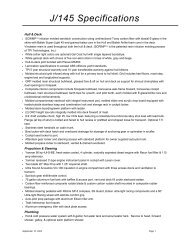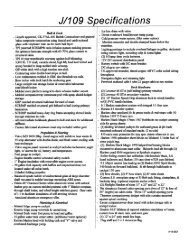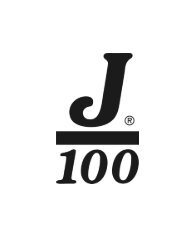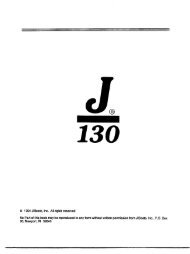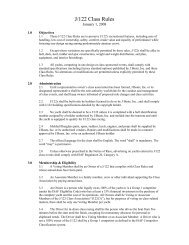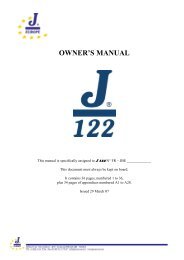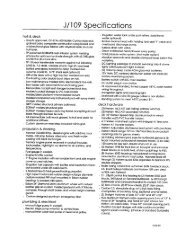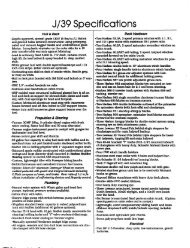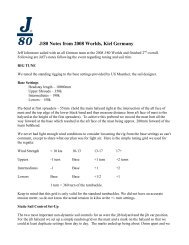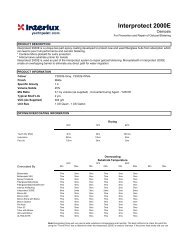J124 Owner Guide.pdf - J/Owners
J124 Owner Guide.pdf - J/Owners
J124 Owner Guide.pdf - J/Owners
- No tags were found...
You also want an ePaper? Increase the reach of your titles
YUMPU automatically turns print PDFs into web optimized ePapers that Google loves.
J/124 OWNER MANUAL 41Safety caution: Check function of all bilge pumps at regular intervals. Clear pump inlets from debris. It isalso prudent seamanship to carry replacement parts for all pumps.Warning the bilge pumping system is not designed for damage control. The combined capacity of thesystem is not intended to drain the craft in the case of damage.Head System• Sink Drain empties directly overboard through a seacock fitting beneath the head sink.The standard J/124 is equipped with one certified Raritan PHII marine head which is capable of dischargingeffluents into the standard 58.8 liter (15 gallon) holding tank or overboard. The system is easy to operateand with correct usage and proper maintenance, will provide many years of use. IMPORTANT - <strong>Owner</strong>sshould familiarize themselves with all local and federal regulations regarding proper discharge and avoidinadvertent discharge at all times. A Y-valve is fitted to the discharge line in order to direct thedischarge flow to either the holding tank or overboard. It is shipped from the factory bolted into placesuch that the flow defaults into the holding tank. In addition, a holding tank pump out system isinstalled to directly pump the contents of the holding tank overboard. This system should only beused when in full compliance with all local discharge regulations.Before operating the HEAD, ensure you have read its manual thoroughly and understand the properprocedures. Silly mistakes can cause severe “head” aches at the worst possible time!. And a word to thewisePLEASE TRAIN YOUR GUESTS ON HEAD OPERATION. NEVER ASSUME THEY KNOW HOW TOUSE IT.The head is a large pump which takes in seawater and flushes waste into the holding tank or overboard.The salt-water intake thru-hull is located on the starboard side of the engine compartment and thedischarge is under the head sink. Remember open/closed positions on these thru-hulls. It is goodseamanship to close the intake and discharge seacock for the head when not in use.When seawater and effluent are pumped through the head, they’re pumped into the holding tank by theaction of pumping the toilet handle. The waste discharge fitting on deck is provided so a Shoreside pumpoutstation can empty the tank. Care should be taken not to overfill the holding tank as effluent can block thevent hose and may damage the tank... or worse, burst the hose. If the toilet is difficult to pump, check tosee if the holding tank is overfilled. “When in doubt, pump it out!” We have found a great resource forunderstanding and maintaining your head system is a book called “Get Rid of Boat Odors” by Peggie Hall -Seaworthy Publications.Recommended cleaning solutions:Holding Tank: Use fresh water and one gallon of white vinegar solution… flush out twice. There are alsoseveral holding tank treatment solutions available through local marine stores.Head: refer to head owner manual for proper cleaning solutions and maintenance.Pumping a quart of fresh water type anti-freeze through the head system and hoses will prevent the sealsand equipment from cracking. The following hoses are connected to the tank.• Waste Discharge Hose from the head• Pump-out Hose leading to the deck fitting• Vent Hose to vent the tank overboard.



